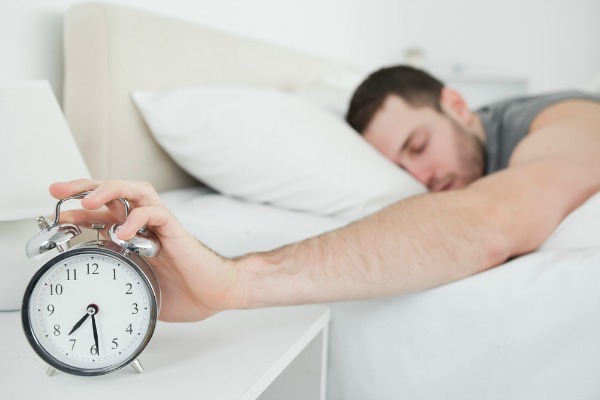Fluctuations in the performances of athletes can amount to 25% within the course of one day. This is what a study conducted by German and British bio scientists put forward recently.
The phenomenon has been known for a long time and it has already been subject to numerous scientific investigations. There are the “early birds”, the people among us who are at the top of their activation level in the mornings, while others can be put in the category of the “owls”, being active late at night but not at all in the mornings. While the former might already be happily whistling in the shower after their regular morning session, the latter are still facing the challenge of overcoming the seemingly insuperable distance between their bed and the bathroom, from where they will probably return soon after their arrival due to the discouraging sight being presented in form of their reflection in the mirror. However, those different types are not necessarily indicators for the actual state of fitness – the presumed morning grouches may as a whole be in the same shape as the happy early birds, or in an even better one. The only difference is that the two types access their performance capacity at different times of the day.

Not so long ago, the general opinion was that it was possible to shape biorhythm through discipline and a certain accommodation time. That is, theoretically, those who tend to have problems getting up early would only need to force themselves to do it for a while and to get used to it and they would soon happily join the early birds for a pre-breakfast session in the forest. Pretty obviously, this seems to be true for many owls – as strong will can move mountains. However, it has been found more recently that, even if people may force themselves into new routines, this does not change the original pattern of their physical capacity. Or, put differently: Early birds stay early birds and owls remain owls, regardless of discipline, self-control or training.
Genetics decide
The reason: A person’s biorhythm depends on genetic predispositions and it can only to a minimal degree be influenced by external factors. The “circadian rhythm”, the biological clock, is a tiny cluster of cells, situated in the diencephalon. The so called “suprachiasmatic nucleus” (SCN), placed in the hypothalamus, sends signals to the brain and it either encourages organs to work or forces them to rest, depending on the time of day and the organ in question. This process is different from person to person and it seems to be highly fixed for each individual. This makes it possible to determine the ideal time for efficient training and starting times in competitions for each athlete. The widely held assumption that athletes are especially capable of performing at their top level in late afternoons or early evenings is only true for the owl types. For the early birds, the level of their performance capacity falls significantly the later it gets.

Study with hockey players
At the beginning of this year, the British biomechanic Elise Facer-Child and the German Roland Brandstaetter from the University of Birmingham published the results of a study conducted in 2014 together with (initially) over 120 top athletes. The scientists first determined the biorhythm of each and every test person. This was done by asking them about their sleeping rhythm as well as the perceived peaks in performance capacity during the day. Secondly, amongst all participants, a group of twenty athletes was chosen as a representative sample, standing, at least statistically, for a “biorhythmic average”. The study, in which the label “top athletes” exclusively comprises hockey players, may seem one-sided at first. However, hockey players are especially suitable subjects for studies in sports science, as the sport unites endurance, maximum strength and also coordination. Of course, samples from other sports would have been interesting to include in this study for purposes of comparison. Furthermore, a group of 20 people can hardly be called representative. Nevertheless, this study from Birmingham has some interesting approaches and certain points may show to be crucial for future research.

Differences of up to 26 percent
An interesting knowledge gained from the study is that of a varying behaviour of the activation level of different biorhythmic types. In the study, early birds or medium types reached the top of their physical capacity about six hours after getting up, that is, noon or early afternoon. The owls on the other hand reached their top level a lot later- only after eleven hours of being awake. The latter also showed the biggest fluctuations in performance capacity within a day. The levels could differ up to 26% between low (morning) and high (evening). The early birds and the medium types in comparison only showed differences of eight to ten percent within a day. Hence, early birds and medium types capable of performing more equally at all times of the day than owls. It is striking that the owl types are able to perform up to one fourth higher in the evenings than in the mornings. What can we learn from that? “We need to get away from the conventional day times and pay more attention to the inner rhythm”, Brandstaetter recommends. As Facer-Child adds, it should not be all about the clock on the wall but rather about the clock inside each individual, our “circadian rhythm”. She states that training is one thing, but knowing when one is able to perform the best is another. This is a finding that might play a crucial role in the quality of training. Because even for the early birds, runs in the morning only make sense as some kind of stimulant or for base training, but not as an efficient key session.
This blog was written in collaboration with Fit for Life, the Swiss magazine for endurance sports.


